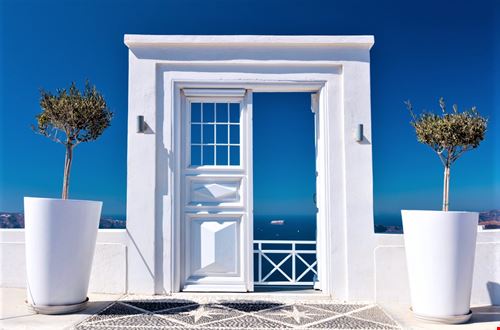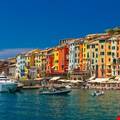Everything you need to know about Paris
Looking for a B&B in Paris? If you are planning a trip to one of the most romantic cities in the world, you are in the right place. We'll give you all the advice you need to make sure you don't miss out on any of the architectural, recreational and cultural facets of this beautiful destination.
Paris is a favourite destination for tourists precisely because of the versatility of its cultural, artistic and entertainment offers. Paris is a city that you tend to visit several times: there is so much to see, once isn’t enough.
Walking through the city's beautiful, elegant and well maintained streets elicits the sense of being the protagonist in a romantic film. Paris is also the city of haute couture, home to some of the most famous fashion designers, as well as theatre and television actors. Paris is a vibrant capital.
What to see in Paris
We will provide you with a guide and tips on must-see sights.
The first tip is certainly to take a cruise on the Seine river, on the very first day you visit Paris. This offers you the chance to see how the city develops between Rive Gauche and Rive Droite, respectively the left and right banks of the Seine that divides the city.
The cruise on the Seine is experienced on a typical French bateaux mouche. The boat ride takes about an hour. A voice-guide will accompany your visit, telling you all about Paris, so you can discover more about the city.
There are various types of boats, and for the romantics there are also those that give you the chance to dine on board while crossing the Seine. Obviously they have a higher cost.
Secure your boat tour in advance, by booking your Seine cruise on Getyourguide.com.
The cruise will allow you to decide from which part of Paris to start your visit. In fact, once you have a clear map of the city, you can start to tour it from the neighbourhood where you are staying.
Your hotel location certainly determines your tour of Paris.
How many neighbourhoods does Paris have?
The city is divided into 20 arrondissements, or neighbourhoods, and each has its own particularity and own history.
The districts of Paris are not simply urban administrative divisions. For the inhabitants, they represent distinct worlds, each with its own characteristics that contribute to the capital's historical charm.
To summarise, the most affluent areas are located mostly in the central and western side, namely the 7th arrondissement (with neighbourhoods such as, Invalides, Saint Thomas d'Aquin, Ecole Militaire), the 3rd (Le Marais) and the 8th (Champs Elysées, Madeleine), the 15th (Grenelle, Vaugirard) and the 16th (Auteuil, Muette, Porte Dauphine).
These represent the epitome of bourgeois neighbourhoods, with magnificent buildings, quiet streets, an elderly population and businessmen, perfectly embodying the idea of a typical 16th district.
On the other hand, the most popular districts are to be found in the north-east of Paris. With the advent of the Industrial Revolution in 1840, factories and workers began to settle in the 18th, 19th and 20th arrondissements.
The 13th district has Chinese origins, with its Asian supermarkets, exotic restaurants and karaoke. The 11th is considered the trendy new district, while the 6th (Saint-Germain des Prés) is known for its bourgeois bohemian residents and literary cafés. The 8th, with the Les Champs Elysées, is a major tourist area.
In short, each neighbourhood tells its own unique story.
However, there are 7 neighbourhoods in Paris that you absolutely must not miss, namely:
- L'île de la cité - in this district you will find Notre Dame;
- Montparnasse district - in this arrondissement you'll find Napoleon's tomb, the Eiffel Tower, the Rodin Museum and the Musée d'Orsay;
- Montmartre district - here you will find the beautiful white basilica of Sacré Coeur. You will breathe in the true artistic soul of the city with its painters, singers and writers sitting and lost in their art on the street corners;
- Opéra district - where of course the Opéra is located, one of the city's liveliest and most elegant districts;
- Pigalle- the famous red light district with its little Moulin Rouge, once a not very recommended place, now one of the most famous venues in the world where you can watch wonderful shows;
- Le Marais- where you can still find charming craft workshops and the Centre Pompidou;
- St.-Germain-des-prés - once the most intellectual area of Paris, is now the liveliest arrondissement, full of places to hang out in the evenings.
Besides these, there is the Latin Quarter, perhaps the youngest part of the city, where the Pantheon and the Sorbonne University are located. A very popular student district offering many attractions, especially at aperitif time and in the evenings.
What are the attractions in the Latin Quarter in Paris?
The Latin arrondissements you will find more bistros, student cafés, public gardens and bookshops, including the historic Shakespeare.
Depending on your budget, we advise you to make a good choice of hotel or B&B in Paris. Of course, all depends on the duration of your stay and the number of visitors. A flat may be ideal for larger groups staying for at least a week.
So next we will advise you on Paris’ accommodation options.
Where can I find accommodation in Paris?
In Paris, finding accommodation can include various options such as hotels, B&Bs and flats. For those wondering where to stay or where to find flats in the French capital, there are numerous online platforms and services offering a wide range of accommodation solutions.
From luxurious hotels in the central districts to comfortable B&Bs in picturesque areas to private flats ideal for longer stays, Paris offers accommodation for every taste and budget.
Among the hotels we recommend, WIT Hotel is charming and central.
Where to dine in Paris
As we pointed out at the beginning of our guide, an open mind to travelling is a good starting point, especially when it comes to culinary traditions. Paris cuisine, for example, has savoury meat dishes and pies, a shame to miss.
Paris is the city where a glass of wine, accompanied by an excellent steak, is a mantra of a happy palate.
Among the historic restaurants in Paris are:
- Le Procope
- Le Grand Café Capucines
- Brasserie Lipp
- Aux Lyonnais
- Brasserie Mollard
- Le Moulin de la Galette
Don't miss the sophisticated French pastries, and delicious custards to delight your palate.
FAQ about Paris
How can I get to the Louvre in Paris?
To get to the Louvre in Paris, you can take the metro and get off at the Palais Royal-Musée du Louvre stop.
Where is the Eiffel Tower in Paris?
The Eiffel Tower is located in the 7th arrondissement, on the Champ de Mars near the Seine River.
How can I get to the Opera Garnier in Paris?
To get to the Opéra Garnier, the metro is convenient, with the nearest stops being Opéra, Chaussée d'Antin-La Fayette, or Auber.
22/02/2024

Find your accommodation
Search for your favorite destination, customize your search and find the right place for you for your next trip.








